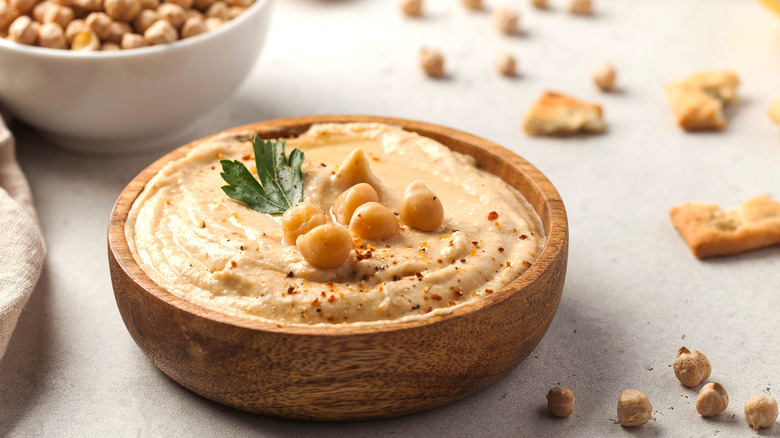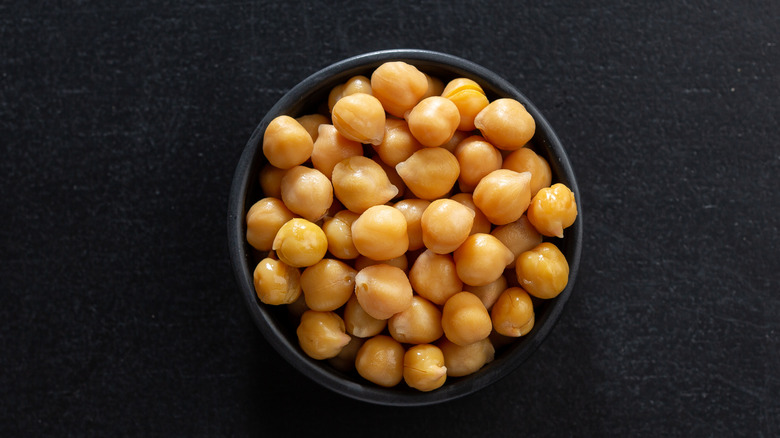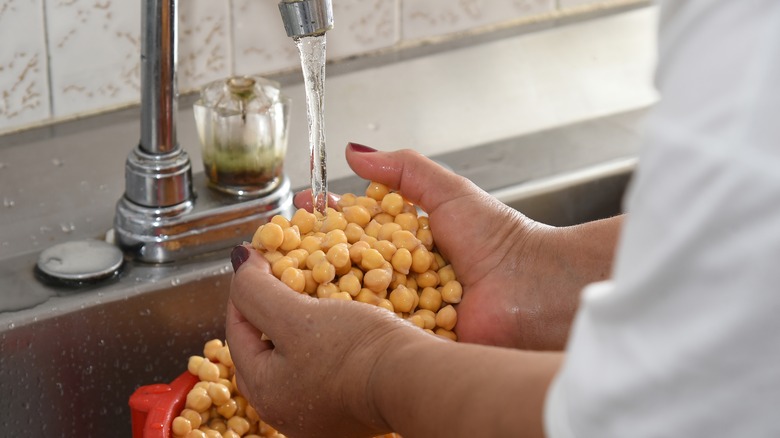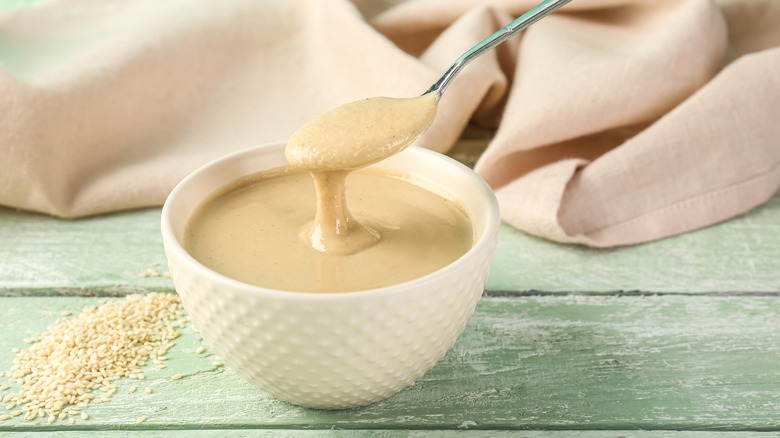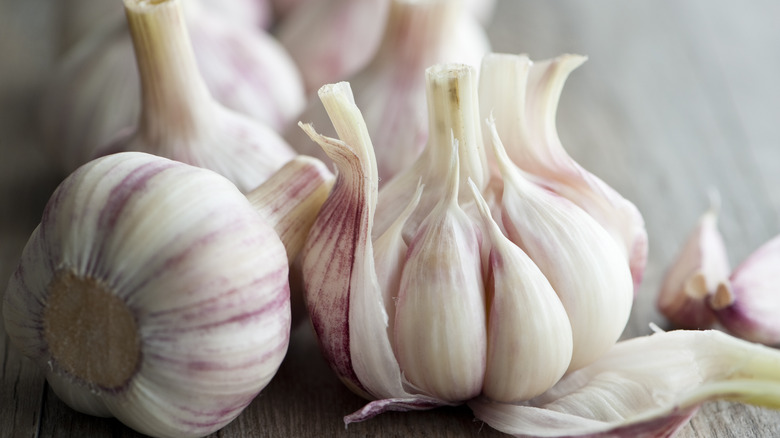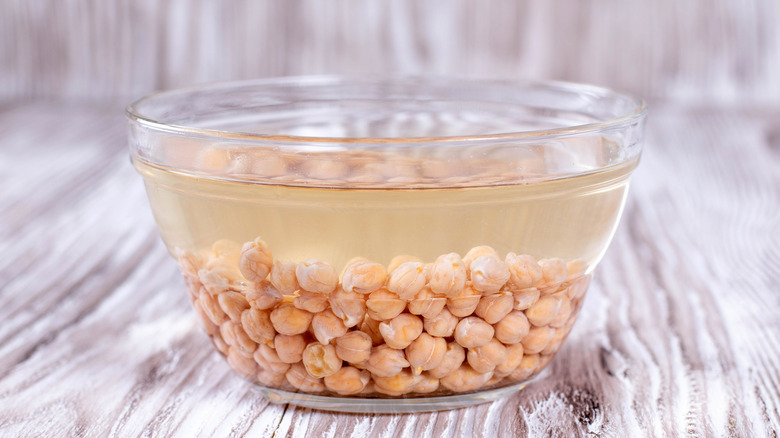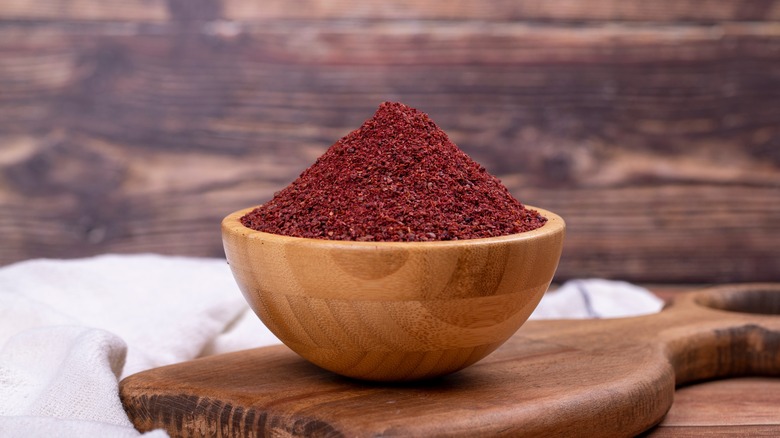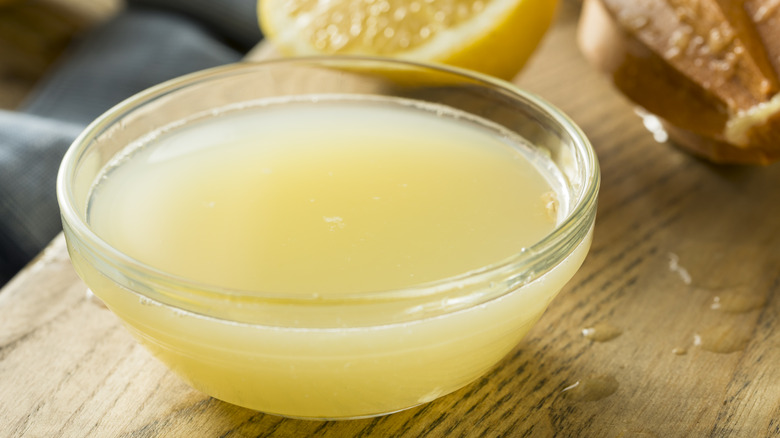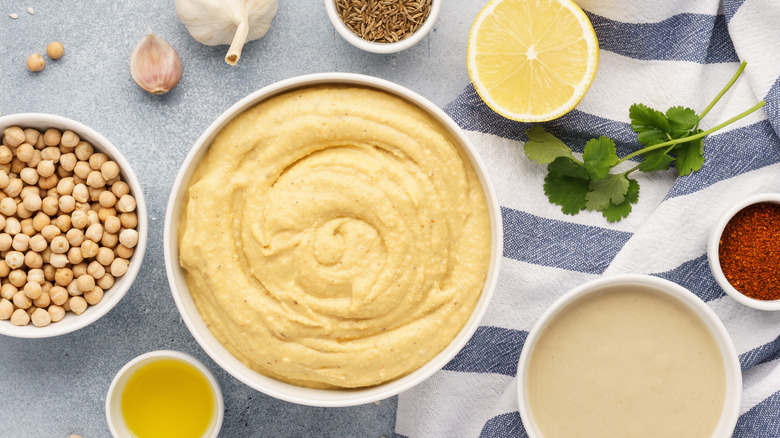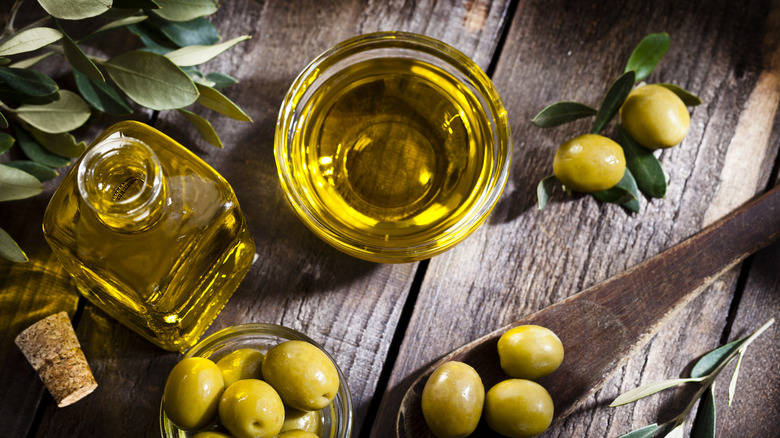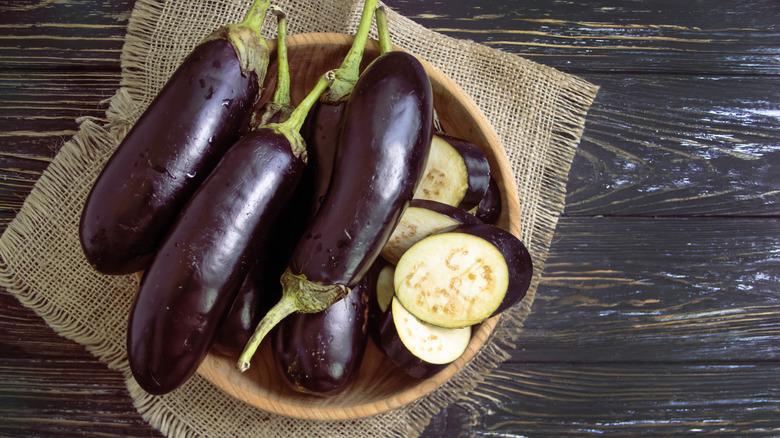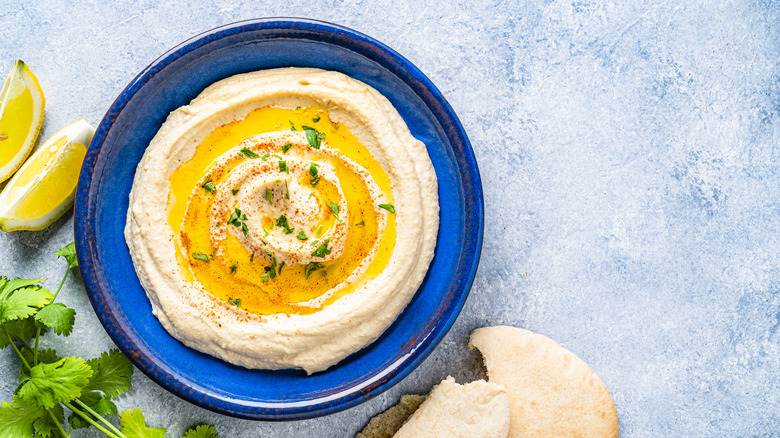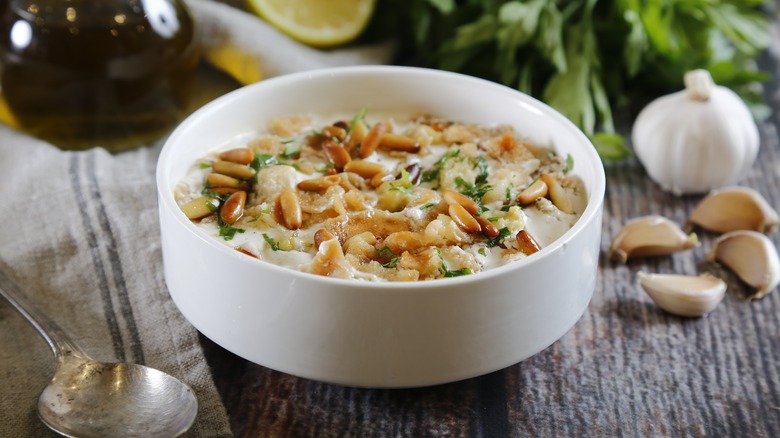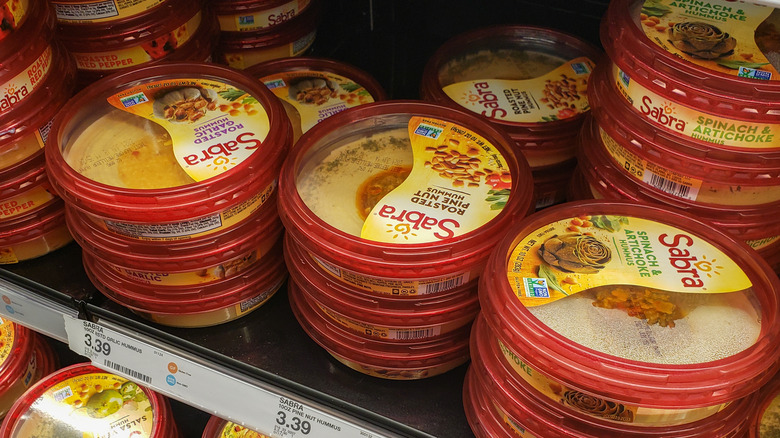14 Mistakes You Need To Stop Making With Hummus
There are a lot of players in the dip market, and whether you prefer baba ghanoush or blue cheese, there's one out there for you. But one dip reigns supreme above them all. Hummus is arguably one of the most well-loved and oldest dips and spreads around the world, and is especially popular in the Middle East. The chickpea-based paste appeared in its earliest iterations in the 13th century, being written about in an Egyptian cookbook. However, some people argue that it was around as long as 2,000 years ago or more. Over time, hummus has retained its core element of mashed or pulsed chickpeas while incorporating new flavors and traversing nations.
Nowadays, the recipe and core components for hummus are well-established, namely chickpeas combined with garlic, tahini paste, lemon juice, and salt. But while most people can pull together a pretty good hummus by combining these ingredients, the art of making a great one is far harder than it appears. Anyone who's ever tried to make hummus at home will know that the dip is prone to turning out grainy, watery, or underpowered in flavor. And that's usually a result of some key mistakes you're making, which hummus pros have long avoided — and which we're determined to teach you.
1. Starting with canned chickpeas
Canned chickpeas are one of the most convenient foods out there. Not only are they cheap and widely available, but they also save on having to prepare dried chickpeas by soaking them, a process that can leave you waiting for up to 12 hours for them to be ready. However, if you're making hummus, you really should put in the extra effort and use the dried version. Dried chickpeas give your hummus a deeper and nuttier flavor, and they also give the dip a little bit more body.
Using dried chickpeas also allows you to better control the texture of the legume you're using. Canned chickpeas can vary widely in quality and firmness, and some can be incredibly soft — and you won't know this until you've opened up the can itself. And it's important to remember that canned chickpeas won't just be the chickpea and nothing else. The processing that occurs to these legumes can result in a large number of additives being thrown in and a surprising amount of sodium ending up in the can. This can not only throw your nutritional targets off, but it may end up making your hummus taste overly salty or bitter, particularly if you don't adjust your seasonings to account for it.
2. Not removing your chickpea skin
Have you ever looked at a chickpea super closely? If you have, you've probably noticed that there's a small yet tough membrane that coats the outside of it. This skin usually isn't an issue, and if you're putting your chickpeas in a curry or stew, you probably won't notice it very much when you come to eat it. But in hummus, failing to remove these robust skins can leave the dip with a way grainier consistency.
The solution, therefore, is to get rid of these skins to give your hummus a smooth finish. If you have the patience and the inclination, you can remove the skins by hand, sliding them off each individual chickpea. A far easier method, however, is to add baking soda to already-soaked chickpeas before simmering them in water. The baking soda causes the skin to break down and become soft — soft enough, in fact, that they'll rinse off if you place them under a running tap. Remember, too, that if you're making your hummus from canned chickpeas, these will also have the skin still attached. You can perform this baking soda trick on those as well, and it should slide away from the legume easily.
3. Getting your tahini ratios wrong
Tahini is one thing that you really can't make hummus without. The sesame paste contributes not only to the flavor but also to the texture of the spread. Tahini provides an all-important fatty element to hummus, giving it a smooth mouthfeel and a thick-bodied, creamy consistency, and its nuttiness and complexity stop the dip from becoming too vegetal or chalky.
However, the amount of tahini you use is a fine balance. If you use too much tahini, you can end up making your hummus bitter and overly cloying and overpower the other flavors that you've added. If you add too little, on the other hand, you won't taste it at all, and it won't contribute much in terms of texture. Recipes will usually call for a few tablespoons to ½ cup of tahini per few cups of chickpeas. Some recipes will add less or more depending on the regional style they're corresponding to. Israeli-style hummus, for example, will contain more tahini and be creamier.
If you're unsure about how much to add or what impact it will have on taste, the best thing to do is to always use slightly less and do a taste test. If it doesn't have enough impact, you can always add slightly more before you spoon it out of the food processor.
4. Picking your garlic incorrectly
Garlic has a starring role in hummus — for good reason. The fragrant, punchy allium flavors prevent the dip from disappearing into flavor obscurity, and give your hummus a savoriness and sharpness that you wouldn't achieve from just chickpeas and tahini. But things can go drastically wrong if you add in the wrong bulbs. If you use garlic that's sprouted shoots, for example, you could end up with a dip that's noticeably more bitter. And as you're not cooking the vegetable, which might remove some of this bitterness, you'll notice it even more.
Using damaged garlic, too, could have an impact on your hummus. You should select your garlic heads for their firmness, opting for solid-feeling plants that don't give off any noticeable or pungent smells. Once you've peeled your garlic cloves, they should be a solid white and firm throughout, with no sprouting or discoloration.
Remember that the flavor of garlic will develop once you add it to your hummus, and adding too much can leave you with a dip that tastes way too strong. If you're especially sensitive to garlic, you might want to err on the side of caution when adding it.
5. Forgetting to soften your chickpeas
As chickpeas are the central component of hummus, you're going to want to make sure you get them just right. And their texture is something you need to nail. If your chickpeas are too brittle when you pulse them, they won't break down properly, and your dip will be gritty. In the worst-case scenario, you'll be left with a load of hard pieces running through the spread, making it inedible.
That's why softening your chickpeas is essential — and the microwave is the key to fixing your lumpy hummus. By microwaving your chickpeas, you cook them gently, softening them even further. If you want to imbue further flavor into your chickpeas, you can also throw a garlic clove into the bowl with them when microwaving, although this may give you a slightly more mellow result than the sharpness of raw garlic.
It's advisable to microwave your chickpeas using liquid so that they don't dry out when they're cooking. If you're using canned chickpeas, you can microwave them directly in the cooking liquid. If, however, you're working with dried chickpeas that you've soaked yourself (which will give you the best results), you can use the liquid you've soaked them in, or simply pop them into some fresh water. You can then use some of the liquid you've cooked them in to make the dip even smoother.
6. Not experimenting with spices
Hummus is not just a delicious dip on its own, but as a mellow, smooth-tasting dish, it's also a perfect base for different flavors. Adding carefully-chosen spices to your recipe can make hummus way more interesting and offer a contrast to the sharpness of the lemon juice and the tanginess of the garlic. Cumin is one of the most popular spices to use in hummus thanks to its woody fragrance and nuttiness pairing well with the dip's flavor components. When used sparingly, cumin can give hummus a slightly smokiness and a mellow spice that works especially well if you're combining the spread with savory meats.
Sumac is also a great choice with hummus, with the slightly floral and citrus notes working excellently with the lemon juice and stopping the dip from tasting too rich or dense. Sumac works well when sprinkled over the top of hummus as a garnish or mixed into the hummus itself. Finally, if you want to add a bit of heat to hummus, using some chili powder is a great option. Chipotle powder can give the dip depth and smokiness, whereas Aleppo pepper flakes will provide slightly more fruitiness and body. If you want more powerful heat, you could even stir some chopped jalapeños through the dip, which will also give it an added sourness.
7. Using store-bought lemon juice
If you've ever had hummus without lemon juice in it, you'll know about it. Hummus is made up of some pretty dense elements, with the chickpeas and tahini threatening to turn it into a gluey, overly-thick affair. Lemon juice is a critical component of hummus due to its ability to cut through all this and brighten up its flavors.
However, all too many people seek to cut down on their workload by using store-bought lemon juice — and this can ruin your hummus. When lemons are cut and squeezed, the juice comes into contact with oxygen, and its composition and flavor start to change. It can quickly turn from something which tastes floral, bright, and sharp, to something which tastes metallic and acidic. Store-bought lemon juice has naturally had way more contact time with oxygen, so will naturally taste different from the fresh stuff — and that taste will work its way into your dip.
Store-bought lemon juices may also contain additives like sodium benzoate, which may have their own flavor profiles and contribute to a different-tasting result. While you can certainly use store-bought lemon juice in a pinch, and doing so is probably better than leaving it out entirely, you really can't get better than a freshly-squeezed result.
8. Throwing your ingredients in the blender at the same time
In the first instance, hummus seems like it's pretty simple to make in your own kitchen. All you have to do is put all the ingredients in a blender, press go, and wait, right? Unfortunately, it's not quite as simple as that. Putting in all your ingredients at once can result in a slightly uneven incorporation, making it harder to achieve the creamy homemade hummus you may be going for.
Instead, the key to super-smooth hummus is to mix your lemon juice and tahini together in a blender first before adding the other ingredients in after, which will level up your hummus. Pre-mixing these ingredients works to make things way creamier. After you've blended these two together, you should then add all the other ingredients one by one, ending with the chickpeas, before scooping it out and adding your garnishes and serving.
9. Forgetting about your olive oil
In many hummus recipes, olive oil isn't included. This can be confusing for some folks, who might be used to seeing it as an added ingredient in their store-bought items — but there's good reason for that. Hummus gets its primary fat content from tahini, which also offers a creamy texture and a complex flavor. Adding olive oil on top of that can make things too heavy and flatten the flavor of the dish.
However, that's not to say that olive oil doesn't have a place at all in hummus — it just may not belong inside it. Instead, olive oil should be drizzled on top of the hummus before it's served. This will allow the flavors of the oil to shine through without becoming muddled in the mixture, and will make the whole dish taste extra-luxurious. And this can be done whether you're making your own hummus or jazzing up a store-bought option.
For the best results, go for extra-virgin olive oil. Extra-virgin olive oil not only has a more distinctive taste, with a slight pepperiness and warmth to it, but it also has more antioxidants. While you can use another type of oil, like vegetable or canola oil, you might find that you lose a lot of flavor by doing so, and end up with a hummus that may feel greasy.
10. Not adding any exciting additions
When hummus is made well, it doesn't necessarily need anything added to it. But if you want to make your dip even better, putting in some innovative new flavors can revive your senses. Adding extra vegetables is one of the best ways to take your hummus up a notch, with many of them complementing its flavor profile. Adding chopped olives, for example, can help to bring out the natural sharpness provided by garlic and lemon juice, while also giving the dip a brininess and a slightly sour edge. It also pairs very well with any olive oil poured over the top.
If smokiness is what you're after, try roasting some eggplant or red peppers and adding them to your hummus. Both of these can also give the spread a slightly sweet edge while simultaneously giving a charred scent and taste. Adding kale or spinach, meanwhile, can give hummus a luminous green color, a hint of grassiness, and an added boost of vitamin C. If you want to make your hummus chunkier and give it an even richer flavor, try stirring through some chopped, roasted nuts. You could even blend in some peanut butter as a twist on the traditional tahini — although bear in mind that this will give you a pronounced peanut flavor.
11. Leaving out the ice
One of the main issues people face when making hummus is a spread that's just way too dense when it's finished. This generally occurs because not enough air has managed to get into the hummus during the blending process, and it can result in a spread that feels more like a solid mass than a smooth, rich treat. Unfortunately, adding room temperature water, while logical, may not have the desired effect. Instead of aerating the hummus, it can simply make it watery and somewhat slimy.
But water can still be helpful to prevent dense hummus — just in a slightly different form. Once you've added your ingredients into your blender, drop in an ice cube, and then hit the button to start. Adding an ice cube helps to water down the hummus, softening it, but as it doesn't immediately blend with the other ingredients, it introduces air into the mixture, making it light.
One thing to bear in mind when doing this is that not all blenders are equipped to handle ice. If you have a slightly lower-powered model, this could result in it breaking. Always check the manufacturer's instructions before putting ice in, and if in any doubt, avoid doing so.
12. Not letting things rest
While preparing certain hummus ingredients can take a while, the actual practice of putting it together is pretty quick. But just because it blends together fast doesn't mean it's at its best straight away. Hummus is full of subtly complex flavors, which need time to settle and incorporate with each other — and some of them, like garlic, won't reach their full potential instantly, and may need some development time once pulsed.
Therefore, it's a good idea to let your hummus rest for a little while after blending it to let the flavors come together. Transfer your hummus into a bowl, and allow it to chill in the fridge for an hour or two before serving. Remember, too, that letting things rest before you combine them could also benefit the flavor. One neat trick is to soak your garlic in your lemon juice for a few minutes, before adding it into the blender. By doing this, you lower its pH and slightly deactivate the alliinase in the vegetable, which is the enzyme that's responsible for making garlic taste so strong. The result is an addition of garlic that won't be acrid and overpowering and instead will remain gentle, fragrant, and delicious.
13. Forgetting about your toppings
You really don't need much to enjoy hummus: Just a bowl, something to dip into it, and an appetite for something delicious. But if you want to kick your hummus into the next gear, grab some toppings to throw on top of it. Hummus is a superb base for a range of toppings, and sprinkling something over the top can make it into a meal in itself, or alternatively just make your dip way more interesting.
To keep things simple and unobstructive, try aiming for toppings that are small, easily distributed, and work with the natural flavor profile of hummus. A sprinkle of pine nuts or roasted chickpeas is a perfect option if you don't want to distract too much from the dish itself, yet still want a textural contrast to its smoothness. Chopped nuts like pistachios or cashews can also work brilliantly. A scattering of herbs, like parsley or coriander, is also a simple topping that will give your hummus a freshness and a vibrant color.
If you'd prefer a topping with a little more body, scattering over some spiced minced lamb or beef will amp up its protein content, and give the hummus a meaty savoriness that's hard to replicate with other ingredients. Vegetarians and vegans could do the same thing with tofu or soy mince.
14. Storing it incorrectly
Whether you're buying hummus in the store or making it yourself, how you store it will directly affect how much you can enjoy it, and for how long for. Like any foodstuff, hummus is perishable, with homemade hummus generally not lasting as long as its store-bought siblings. Store-bought hummus may have preservatives included in its recipe, which extends its lifespan. Generally, though, both homemade and store-bought hummuses will be past their prime by seven days after making or buying them and may perish sooner than that.
That's assuming you store it correctly, however. Hummus should always be stored in the fridge in an airtight container. Storing it at room temperature will cause bacteria to grow faster, and exposing it to air will expose it to oxygen, potentially drying it out. And if you see any warning signs on your hummus that could indicate spoilage, you should always throw it out instantly. Spoiled hummus may start to appear dry or cracked, and may start to discolor or grow mold. It's also worth keeping an eye (or a nose) out for any strange smells emanating from the dip, or any off tastes that could indicate that it's no longer edible. For store-bought hummus, you should always keep an eye on its expiration date. But bear in mind that it may last longer, or for a shorter time, than the date suggests.
